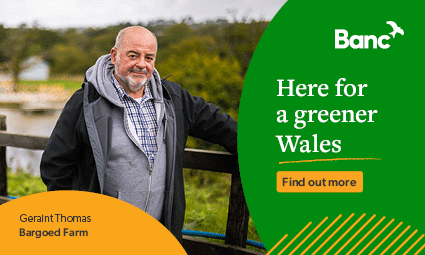
GUEST COLUMN:
Chris Jones
Place Practitioner
Chris Jones Regeneration
For years, town centres were built around retail. High streets were busy, shops were full, and footfall was high. But that model has changed. Across Wales, high streets have been hit by changing shopping habits, online retail and the impact of large retail parks on the edges of towns.
The challenge now is how we reimagine these spaces to make them fit for the future. That means moving beyond just retail and thinking about town centres as places where people live, work, socialise and take pride in their community.
Towns need to be curated, not just left to evolve without direction. A good town centre is a mix of housing, retail, arts and culture. It is a place with activity, with life, where people feel a sense of belonging. That does not happen by accident. It takes a considered approach that brings together businesses, public sector partners, the third sector and the people who live there.
In early summer 2023, Newtown and Llanllwchaiarn Town Council sought my support to help develop their town partnership. The local council had already talked to local businesses, community groups and organisations to gauge interest for being involved in a partnership.
The town partnership was subsequently set up to bring together businesses, local organisations and the wider community to shape the town’s future. That kind of collaboration is essential in town centres today, ensuring that regeneration and investment reflect the needs of the people who live and work there.
In March 2024, at the One Voice Wales National Awards, Newtown and Llanllwchaiarn Town Council was awarded joint winner for Best Community Engagement Initiative for its work creating the town partnership, with the judges commenting on “the process and strategic nature of the initiative”.
Housing also has a key role to play. Too many town centres have empty upper floors above shops or underused spaces that could provide homes. When people live in a town centre, it helps create a safer, more vibrant place. It brings footfall to businesses and makes the town feel active in the evenings, not just during working hours. But that housing has to be designed in a way that reflects the journey through life. That means starter homes, affordable homes, and family homes that allow people to move up within the same community.
The role of landlords is also critical. Too often, buildings in town centres are owned by distant landlords who see them purely as financial assets rather than as part of a thriving place. But there are examples of landlords who take a longer-term view, who invest in their buildings in a way that benefits both the town and their own returns. We need more of that thinking, where landlords see themselves as curators of place, not just as property owners, and who are invested in supporting their tenants to be a part of their town’s story.
The public sector must also show confidence. If councils and government want businesses and landlords to invest, they need to demonstrate a clear vision and back it with action. In Monmouth, for example, the work on Monnow Street was about more than just redesigning a road. It was about creating a place that was welcoming, easy to navigate and designed for people, not just cars. That took investment, consultation and a strong narrative about why it mattered.
Transport and connectivity play a major role in town centre success. People need to be able to move easily between their homes, businesses and public spaces. Active travel, public transport and well-planned routes all help create the feel of a connected, accessible neighbourhood. If a town centre is designed only around cars, it can feel like a place to pass through rather than a place to spend time in.
All of this work comes back to the people who use a town. It’s about working with businesses, with community groups, and with individuals to build a shared vision. Often, that means simply talking to people – walking the high street, having conversations, understanding their priorities. It means bringing people together who may not have realised they share the same ambitions for their town.
Every place has its own character, and there is no one-size-fits-all approach. But if we want town centres to thrive, we need to think of them as neighbourhoods, not just shopping streets. That shift in mindset is what will ensure they remain relevant, resilient and successful for the future.













